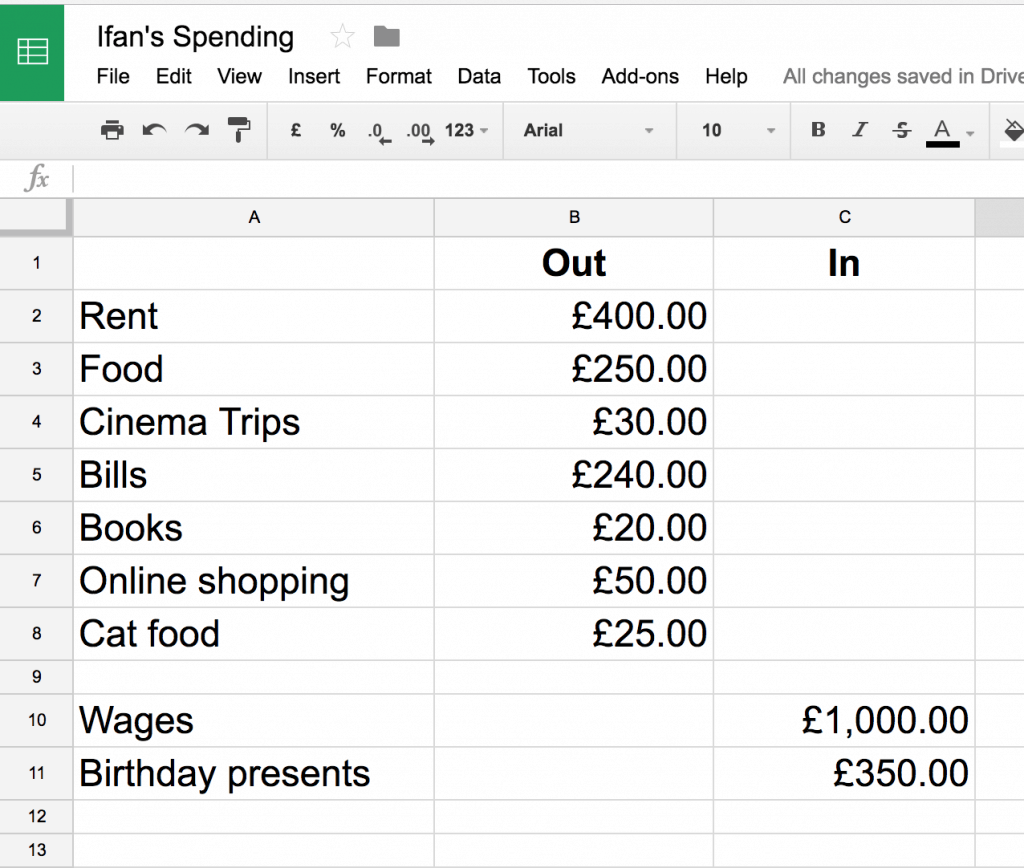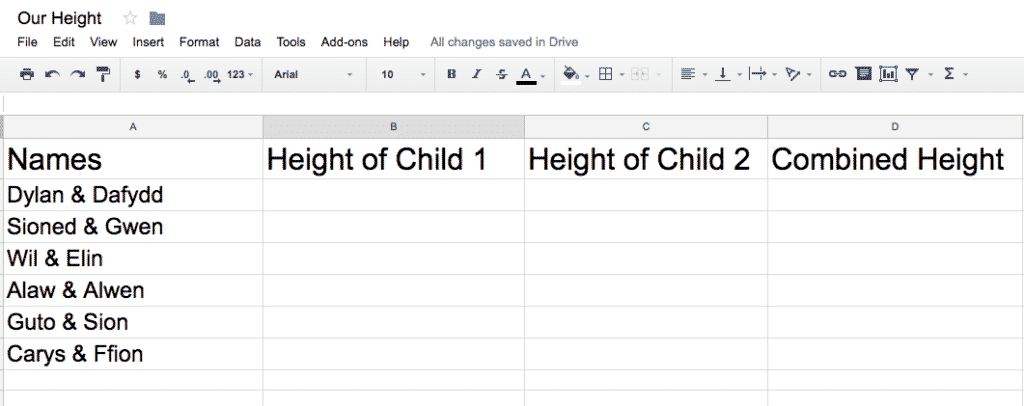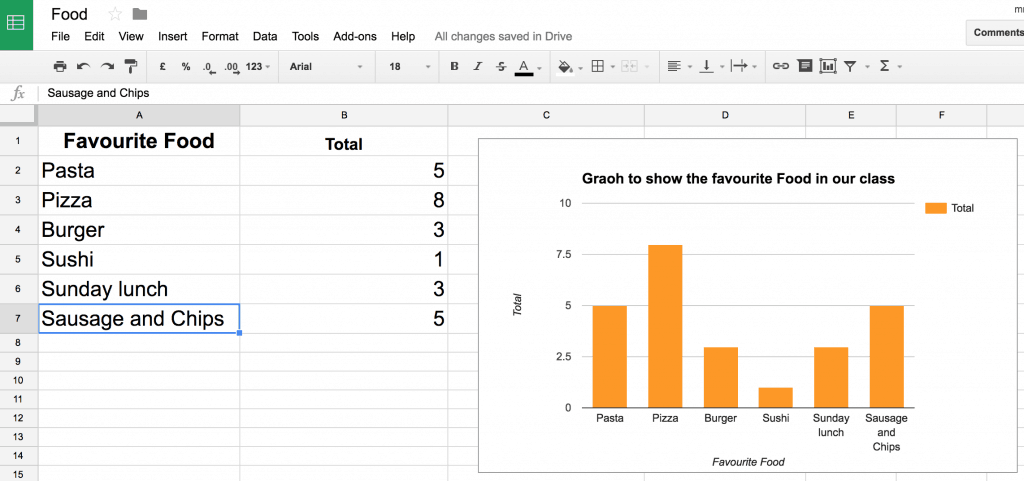Spreadsheets
4.2 - Data and Information Literacy
Activity 1
Spreadsheet Reading

This first activity is very simple and very quick. It's unlikely to take you a full lesson. Pupils will look at a spreadsheet you created and answer simple questions relating to the information in it.
Prepare:
- Create a spreadsheet using Excel or Google Sheets. The spreadsheet should be kept simple, showing the entries for a personal or small business account. (10 or so entries for outgoings, plus a couple of income entries)
- Write five or six questions which can be answered from looking at the spreadsheet (e.g. What was Dylan's largest expense? Did he make more money than he spent?)
Activity Tasks:
- Show the pupils the spreadsheet. It can be on the interactive whiteboard or printed out, but letting them open a copy on their computer is recommended so that they get used to the layout of Excel or Google Sheets.
- Ask a few example questions, helping to familiarise them with the expenditure and income columns.
- Give them the questions to be answered. For the more able pupils, you can differentiate by setting more complicated questions (e.g. How much more did he spend on rent than on food?)
Remember
- This is a very simple activity, similar to graph or table reading activities that you've done countless times in Maths lessons.
Activity 2
The Tallest Pair
Having learnt what a spreadsheet is in Activity 1, pupils will now start adding their own data and even use the formula button to create simple addition formulas.
Prepare:
- Create a spreadsheet in Excel or Google Sheets. The spreadsheet should consist of four columns, the first headed "Names", the second headed "Height of Child 1 (cm)" , the third headed "Height of Child 2 (cm)" and the fourth headed "Combined Height"
- Save the spreadsheet in a folder everyone can access.

Activity Tasks:
- Pupils split into pairs and measure each other (as part of your measuring Maths unit). Write their heights on the white board.
- After opening the spreadsheet and saving a copy of their own, pupils type the names of all the pairs in column 1. Then they write the height of all pupils in columns 2 and 3.
- Using the formula button, pupils make the spreadsheet add the cells in columns 1 and 2 to give the combined height of each pair.
- Ask questions about the results. "Which pair is the combined tallest?" "Is the tallest child in the tallest pair?"
Adding Formula in Google Sheets
Remember
- This activity is mostly focused on creating the formulas, but having them input the data and answer questions on the results are both important skills, so don't skip them.
Activity 3
Graphs Made Easy
The final Year 3 spreadsheet activity involves making a simple bar chart from Excel or Google Sheets. Whilst you can easily make graphs in Purple Mash or J2E as well, this activity expressly involves spreadsheets, so stick to Excel or Google Sheets.

Prepare:
- Conduct a survey as part of your Maths lessons (e.g. favourite fruit, types of cars passing the school, favourite Christmas carol, anything!)
- Create a table in a spreadsheet on Excel or Google Drive with an empty column for the options and an empty column for the totals.
- Save the spreadsheet where pupils can access it.
Simple Charts in Google Slides
Activity Tasks
- Pupils open the spreadsheet and save their own copy. (If using Google Classroom, share a copy each with the pupils).
- Enter all the data from their tally charts into the spreadsheet.
- Highlight the two columns and use the create graph function to make a bar chart.
- Ensure both axes are labelled correctly.
Remember
- Whilst it's important to teach pupils to be selective about printing, a completed bar graph is well worth printing!
